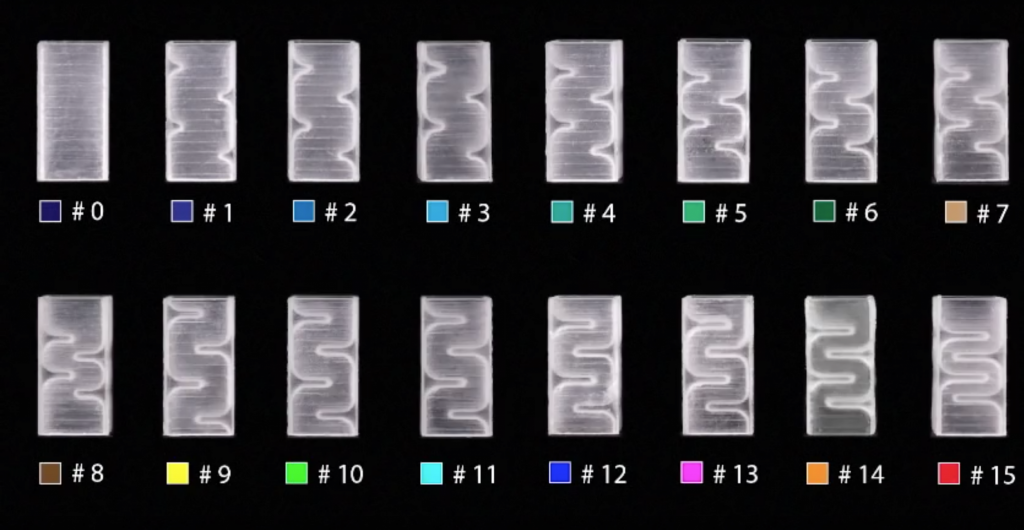Research from the Interact Lab at the UK’s University of Sussex uses 3D printed bricks to simplify the way sound is manipulated. In making the technology more practical, the research enhances ultrasonic capabilities for medical treatments, engineering, ultra-haptics, and levitation.
3D printed bricks arranged into 2 layers of plates to levitate a polystyrene ball using sound. Clip from “Metamaterial bricks and quantization of meta-surfaces” via Interact Lab on YouTube
Setting-up the ultrasonic devices
The ultrasonic devices used to perform tasks including inspection of metal parts or tumor treatments are typically set-up in phased-array. In phased-arrays each transducer is individually controlled to emit a sound wave, making operation complicated, and the resulting devices expensive.
Researchers at the Interact Lab demystify this phased-array set up in a series of 3 layers.
Brick by brick
Instead of arranging the transducers in a particular formation and programming the direction of their output, the sound-emitting devices are arranged 8×8 on a flat surface, and controlled by plates placed above them.

These plates match the 8×8 grid of the transducers, and are arranged with a collection of 3D printed bricks.
Initially, the research started with 16 types of brick, each with a different shaped tract running through the center. Improving upon the concept, the researchers were then able to whittle the bricks down to an arrangement of 11, and then 8 different brick types.

To control sound coming from the transducers, the bricks are placed into each compartment of a plate four at a time. The plates are then stacked, one above the other, to create the arrangement capable of levitating a polystyrene ball.
Metamaterials and the wider industry
The bricks are defined as metamaterials, i.e. performing outside of nature, by the air and sound controlling channels in their center.
Each one is printed on a 3D Systems ProJet HD 3000 Plus, using the Multi Jet Printing technique that layers materials by direct printing of UV curable ink.
In the study, the authors outline what fabrication in this way could mean for the wider industry,
As a result of advances in metamaterials and the rapidly increasing capabilities for fabricating materials, it is expected that the traditional notion of what constitutes an acoustic device continues to evolve.
Our quantization approach, along with the functional metamaterial bricks, may enable the future development of fully digital spatial sound modulators, which can be controlled in real-time with minimal resources.
The paper Metamaterial bricks and quantization of meta-surfaces can be accessed in Nature Communcations, and is co-authored by Gianluca Memoli, Mihai Caleap, Michihiro Asakawa, Deepak R. Sahoo, Bruce W. Drinkwater and Sriram Subramanian.
The aims of this research coincide with a project by Asier Marzo at the University of Bristol. When 3D Printing Industry spoke to Marzo in January 2017, he explained how his team simplified a tractor-beam arrangement through a 3D printed cup.
Professor Sriram Subramanian, co-author of the University of Sussex’s research, also advised on Marzo’s study, and is a co-founder of Ultrahaptics technology developed at the University of Bristol in 2013.
Both projects seek to enhance human interaction and experience with digital technology. The methods also encourage other researchers to examine the possibilities of their 3D printers, as in the microfluidic lego bricks produced by the Department of Biomedical Engineering at the University of California.
To stay up to date with 3D printing research you can subscribe to the 3D Printing Industry newsletter and follow our active social media channels.
Featured image shows stacking Tetris bricks. Image via e_flux conversations



